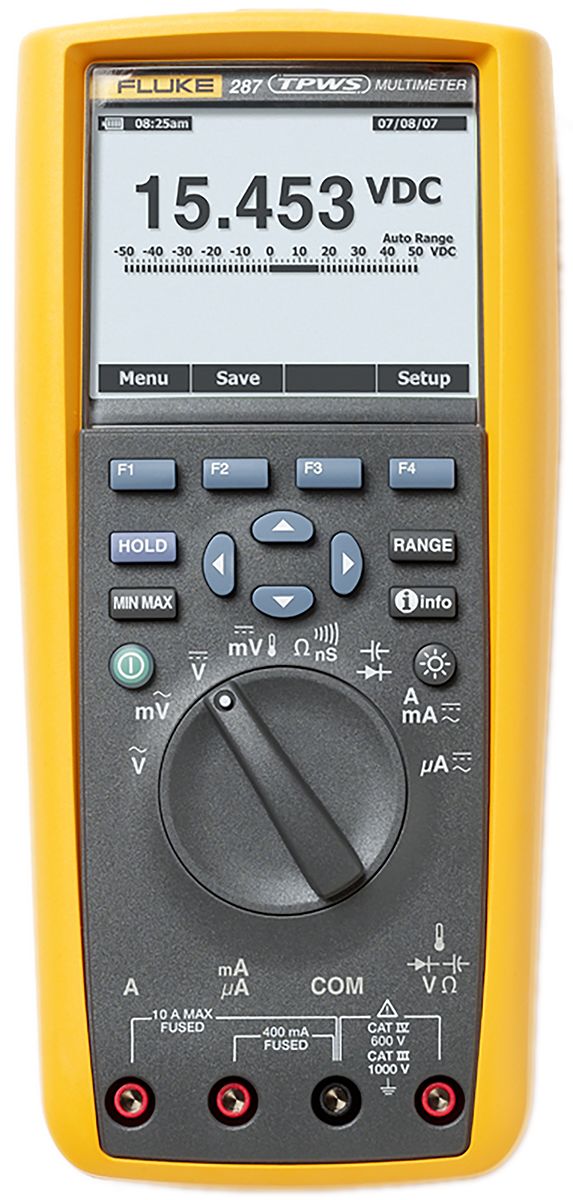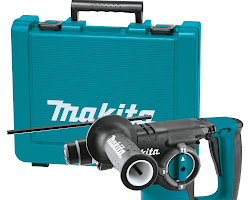Fluke 287: Top-notch Specifications, Comprehensive Comparisons, And Trusted Buying Sources
Fluke 287 Information
The Fluke 287 is a true-RMS electronics logging multimeter with TrendCapture. It is a high-end multimeter that is designed for professional use. It is accurate, versatile, and easy to use.
Specifications
| Feature | Specifications |
|---|---|
| Display | 50,000 count, ¼ VGA display with white backlight |
| Accuracy | DC Voltage: ±0.02% (2 digits), AC Voltage: ±0.05% (2 digits) |
| Current Range | 20 A (400 μA), 10 A (20 A for 30 seconds) |
| Resistance Range | 400 MΩ |
| Capacitance Range | 100 mF |
| Temperature Range | -40 to 100 °C |
| Memory | 10,000 readings |
| Data Logging | Up to 100 readings per second |
| Graphing | Yes |
| Communication | USB, Bluetooth |
Features
- True-RMS measurements for accurate readings on complex signals or non-linear loads.
- TrendCapture feature to graphically display logged data, making it easy to identify trends and anomalies.
- Zoom on trend feature to zoom in up to 14 times for detailed analysis of logged data.
- Selectable AC filter (smoothing mode) to help display a steadier reading when the input signal is changing rapidly or noisy.
- Peak capture to record transients as fast as 250 μs.
- Relative mode to remove test lead resistance from low ohms or capacitance measurements.
- FlukeView forms to document, store, and analyze individual readings or a series of measurements.
- Fluke Connect compatibility to wirelessly connect to a smartphone or tablet for remote monitoring and control.
What's in the box
- Fluke 287 multimeter
- Test leads
- Alligator clips
- Amp jack plugs
- Instruction manual
Conclusion
The Fluke 287 is a powerful and versatile multimeter that is ideal for professional use. It is accurate, reliable, and easy to use. The TrendCapture feature is a valuable tool for troubleshooting and identifying trends. The Fluke Connect compatibility makes it easy to share data with others or remotely monitor a circuit.
If you are looking for a high-end multimeter that can handle the most demanding tasks, the Fluke 287 is a great option.
Fluke 287 Compare with Similar Item
a table comparing the Fluke 287 with two similar multimeters:
| Feature | Fluke 287 | Fluke 189 | Fluke 117 |
|---|---|---|---|
| True RMS | Yes | Yes | No |
| Logging | Yes | Yes | No |
| Memory | 64,000 | 32,000 | 2,000 |
| Accuracy | ±0.02% | ±0.02% | ±0.2% |
| Display | 6000 counts | 6000 counts | 4000 counts |
| Dimensions | 10.25 x 7.75 x 3.5 in | 10.25 x 7.75 x 3.5 in | 8.7 x 5.7 x 2.3 in |
| Weight | 0.28 lb | 0.28 lb | 0.43 lb |
| Price | $599 | $699 | $129 |
As you can see, the Fluke 287 is a high-end multimeter with a number of features that make it ideal for professional use. It has true RMS measurement, logging capabilities, and a large memory capacity. It is also very accurate and has a bright display.
The Fluke 189 is a similar multimeter with a few less features. It does not have as much memory, and its accuracy is not quite as good. However, it is still a very capable multimeter that is suitable for professional use.
The Fluke 117 is a more basic multimeter that is designed for home use. It does not have true RMS measurement or logging capabilities, but it is still accurate and has a large display. It is a good value for the price.
Ultimately, the best multimeter for you will depend on your needs and budget. If you are a professional who needs a high-end multimeter with all the features, the Fluke 287 is the best option. If you are looking for a more affordable multimeter for home use, the Fluke 117 is a good choice.
Fluke 287 Pros/Cons and My Thought
The Fluke 287 is a professional-grade digital multimeter that is known for its accuracy, durability, and versatility. It is a true RMS meter, which means that it can accurately measure the root mean square value of a waveform, regardless of its shape. This makes it ideal for measuring AC and DC signals, as well as non-sinusoidal waveforms.
The Fluke 287 also has a number of other features that make it a valuable tool for electronics professionals. These features include:
- Datalogging: The Fluke 287 can record up to 10,000 readings, which can be used to create graphs and trend charts. This is a valuable feature for troubleshooting problems and identifying trends.
- Autoranging: The Fluke 287 automatically selects the correct range for each measurement, which eliminates the need to manually change the range. This saves time and prevents errors.
- Low impedance mode: The Fluke 287 has a low impedance mode that allows it to measure small currents and voltages with high accuracy. This is a valuable feature for measuring sensitive circuits.
- Conductivity measurement: The Fluke 287 can measure the conductivity of liquids, which is a valuable feature for troubleshooting electrical problems in industrial settings.
Here are some of the pros and cons of the Fluke 287:
Pros:
- Accurate
- Durable
- Versatile
- Datalogging
- Autoranging
- Low impedance mode
- Conductivity measurement
Cons:
- Expensive
- Not as user-friendly as some other multimeters
- Requires a separate adapter to connect to a computer
Here are some user reviews of the Fluke 287:
- Positive review: "I've been using the Fluke 287 for a few years now, and I'm very impressed with it. It's accurate, durable, and has a lot of features that make it a valuable tool for troubleshooting electrical problems. I would definitely recommend it to other electronics professionals."
- Negative review: "I found the Fluke 287 to be a bit too complex for my needs. I also didn't like the fact that it requires a separate adapter to connect to a computer. I ended up returning it and getting a simpler multimeter."
Overall, the Fluke 287 is a high-quality multimeter that is well-suited for professional use. It is accurate, durable, and versatile. However, it is also expensive and not as user-friendly as some other multimeters.
My thoughts on the Fluke 287 are that it is a great multimeter for professionals who need a high-accuracy, durable, and versatile tool. However, it is not the best choice for beginners or hobbyists who are looking for a simple and easy-to-use multimeter.
If you are a professional who needs a high-quality multimeter, I would recommend the Fluke 287. However, if you are a beginner or hobbyist, I would recommend a simpler and more affordable multimeter.
Fluke 287 Where To Buy
some places where you can buy Fluke 287 and spare parts:
- Fluke Direct: This is the official website of Fluke, so you can be sure that you are getting genuine products. They have a wide selection of Fluke 287s and spare parts, and they offer free shipping on orders over $50.

- Walmart: Walmart is a great place to find affordable electronics, and they often have Fluke 287s on sale. You can also find spare parts for the Fluke 287 at Walmart.

- Amazon: Amazon is another great place to find Fluke 287s and spare parts. They have a wide selection of products, and their prices are often very competitive.

- Best Buy: Best Buy is a good option if you want to buy a Fluke 287 in person. They have a few different models of the Fluke 287 in stock, and they also sell spare parts.

- Lowes: Lowes is another good option for buying a Fluke 287 in person. They have a few different models of the Fluke 287 in stock, and they also sell spare parts.

- eBay: eBay is a good place to find used Fluke 287s and spare parts. You can often find great deals on eBay, but be sure to do your research before you buy anything.

I hope this helps!
Fluke 287 Problems and Solutions
some common issues and solutions for the Fluke 287 multimeter:
Issue: The multimeter will not power on. Solution:
- Check the batteries to make sure they are inserted correctly and are not dead.
- Try using different batteries or a different power source for the multimeter.
- If the multimeter still does not power on, it may need to be repaired.
Issue: The display is faded or has missing segments. Solution:
- Try cleaning the display with a soft cloth.
- If cleaning the display does not work, the multimeter may need to be repaired.
Issue: The multimeter will not measure or read volts, amps, or ohms. Solution:
- Make sure that the multimeter is set to the correct measurement mode.
- Check the connections to make sure that they are secure.
- If the multimeter still does not measure or read values, it may need to be repaired.
Issue: The multimeter is giving inaccurate measurements or readings. Solution:
- Make sure that the multimeter is calibrated properly.
- Check the connections to make sure that they are secure.
- If the multimeter is still giving inaccurate measurements or readings, it may need to be repaired.
Issue: Turning the switch knob produces unexpected results. Solution:
- Try resetting the multimeter by turning the rotary switch to Off and then back to the On position.
- If resetting the multimeter does not work, the multimeter may need to be repaired.
Issue: The LCD display or case is cracked or broken. Solution:
- The multimeter will need to be repaired.
How to reset the Fluke 287 multimeter:
- Turn the rotary switch to Off.
- Wait a few seconds.
- Turn the rotary switch back to On.
I hope this helps!
Fluke 287 Manual
Safety Information
- Read and understand all safety warnings and instructions in this manual before using the Fluke 287 multimeter.
- Do not operate the multimeter if it is damaged.
- Do not use the multimeter in a hazardous atmosphere, such as an area where there is flammable gas or dust.
- Do not use the multimeter if it is wet.
- Do not use the multimeter to measure voltages or currents that are higher than the rated maximums for the multimeter.
- Do not use the multimeter to measure voltages or currents that are not within the specified range for the function you are using.
- Do not use the multimeter to measure frequencies that are higher than the rated maximum for the multimeter.
- Do not use the multimeter to measure temperatures that are higher than the rated maximum for the multimeter.
- Do not use the multimeter to measure capacitances that are higher than the rated maximum for the multimeter.
- Do not use the multimeter to measure resistances that are lower than the rated minimum for the multimeter.
- Do not use the multimeter to measure continuity if there is a possibility that the circuit contains a live voltage.
- Do not use the multimeter to measure current if the circuit is not turned off.
- Do not use the multimeter to measure current if the circuit is not fused.
- Do not use the test leads to probe live circuits.
- Do not use the test leads to touch any exposed electrical conductors.
- Do not use the test leads to touch any other objects that are not part of the circuit you are measuring.
- Do not connect the test leads to the same terminal on the multimeter.
- Do not connect the test leads to the same terminal on the circuit you are measuring.
- Do not leave the multimeter unattended while it is connected to a circuit.
- Do not store the multimeter in a hot or humid environment.
- Do not store the multimeter in a location where it is exposed to moisture or water.
Before Use
- Make sure that the multimeter is turned off before you connect the test leads to the circuit.
- Make sure that the multimeter is set to the correct function and range for the measurement you are making.
- Make sure that the test leads are properly connected to the multimeter.
- Make sure that the test leads are not touching any other objects that are not part of the circuit you are measuring.
Troubleshooting
- If the multimeter is not working properly, check the batteries.
- If the batteries are good, check the fuses.
- If the fuses are good, check the connections to the multimeter.
- If the connections are good, contact Fluke Technical Support for assistance.
Maintenance
- Keep the multimeter clean and free of dirt and dust.
- Do not use harsh chemicals or solvents to clean the multimeter.
- If the multimeter gets wet, dry it off immediately.
- Do not open the multimeter.
Warranty
The Fluke 287 multimeter is warranted to be free from defects in materials and workmanship for a period of one year from the date of purchase. If the multimeter fails during the warranty period, it will be repaired or replaced at no charge.
Contact Information
- Fluke Corporation
- 600 Howard Street
- Everett, WA 98201
- USA
- Phone: 1-888-993-5853
- Website: https://www.fluke.com
Additional Information
- The Fluke 287 multimeter is a true-RMS multimeter, which means that it provides accurate measurements of AC signals that have non-sinusoidal waveforms.
- The multimeter has a variety of features that make it ideal for use in electronics troubleshooting and maintenance, including a 10 A current range, a 100 mF capacitance range, and a temperature measurement function.
- The multimeter also has a logging function that can be used to record the results of measurements over time.
I hope this manual has been helpful. Please contact Fluke Technical Support if you have any further questions.


Comments
Post a Comment